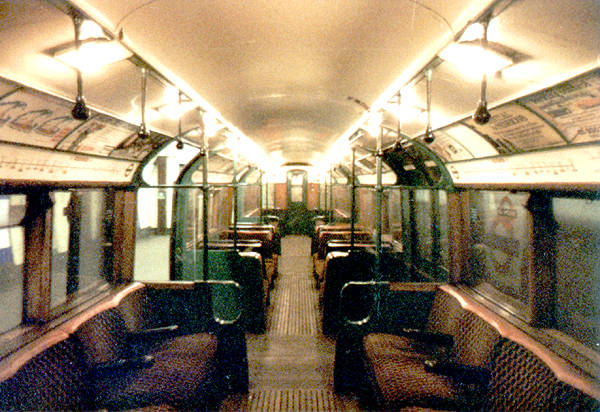 The episode of Thunderbirds, when they envisioned a time that the whole of the London Underground was abandoned. |
|
|
|
|
 This is its north side of the river entrance on Tower Hill, rebuilt after closure. According to Mark Brader, the equivalent south side entrance "...fell to redevelopment" in the 1990s. |
|
|
|
|
 St. Anne's did get this ventilation 'station' though. It's hardly a design classic yet there is a virtually identical one between Wood Green and Bounds Green as well. (photo: 2001) |
|
|
|
|
 |
|
|
|
These trains with the 'homely' interiors only disappeared from London's underground in the 1990s. |
 |
|
 The red brick building on the left has been demolished and the canopies have been removed. |
|
|
|
|
 This was a major redevelopment scheme involving the demolition of the buildings over the station, including the substation which was temporarily relocated in the disused bay road to the west of your photograph. Beaver House and the Royal Bank of Canada were partners in redeveloping the site, together with the adjacent land connecting to Upper Thames Street, although the two construction sites were initially separately controlled. This project resulted in the complete renewal of all the platform level architectural finishes except that an asphalt surface was reinstated on the platforms, replaced by the later project. All this work was carried out during Engineering Hours and Possessions, whilst the station remained open for public use. |
|
 The disused terminating platform at Liverpool Street station on the Met/H&C/Circle lines. It was taken out of service on 26/01/1981, according to IanVisits. The covered section of it is no longer visible from the existing platfoms and the land for the open air section has been given over to Crossrail. (photo: 2005) |
|
 The disused terminating platform at Liverpool Street station on the Met/H&C/Circle lines, facing the other way (toward Moorgate). The space seen here has been given over to Crossrail. (photo: 2005) |
|
